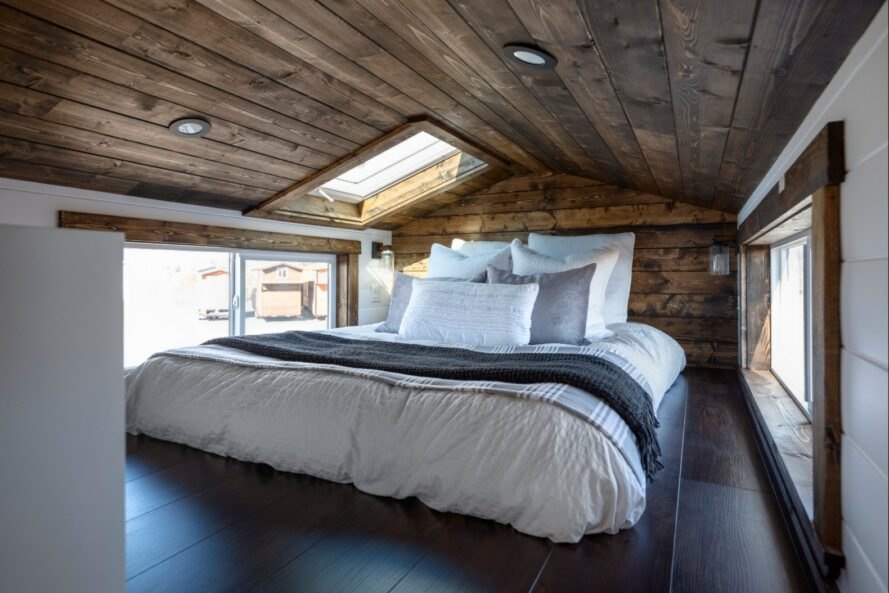Tiny houses on wheels are becoming increasingly popular as a way to downsize, save money, and live more simply. They provide the same comforts of home, while being transportable and unique. If you're looking for an adventure, or just want to try something different, then building a tiny house on wheels could be right up your alley.
Benefits of Tiny House Living
One of the most significant benefits of tiny house living is the reduced cost of homeownership. With less square footage, the cost to build or buy a tiny home is significantly lower than that of traditional homes. Additionally, because they are smaller, there's typically less maintenance required and utility bills are generally cheaper. This financial freedom can allow people to put more money towards other areas of their lives such as travel, hobbies, or saving for retirement.
Another advantage to living in a tiny home is the flexibility it provides. Because many tiny homes are built on wheels, they can be easily transported from one location to another with minimal hassle. This means that individuals can change their scenery frequently without having to worry about selling property or buying new real estate. Furthermore, this mobility allows for a more minimalist lifestyle and encourages individuals to simplify their possessions.
Finally, tiny house living promotes environmentally friendly habits by encouraging sustainable practices such as composting toilets and rainwater collection systems. The small size also forces individuals to consume fewer resources overall and have a smaller carbon footprint than those living in traditional homes. By making conscious decisions about energy consumption and waste management within their home, those who live in tiny houses become more aware of the impact they have on the environment and work towards reducing it as much as possible.
Building a Tiny House on Wheels
Building a tiny house on wheels can be an exciting and challenging project for anyone looking to downsize their living space or embrace a minimalist lifestyle. To start, it's important to consider the size and weight restrictions of your chosen trailer or base. From there, you'll need to plan out the layout and design of your tiny home, considering each element carefully to maximize functionality while minimizing clutter.
When it comes to materials and construction methods, many tiny house builders opt for lightweight yet durable options such as steel framing, SIPs (structural insulated panels), and wood siding. Some may also choose to incorporate eco-friendly features like solar panels or composting toilets into their designs. Regardless of your chosen materials or features, it's essential to follow proper building codes and regulations in order to ensure the safety and longevity of your tiny home.
Living in a tiny house on wheels can offer numerous benefits beyond just simplifying your life. With the ability to travel easily from one location to another, you can enjoy new scenery without sacrificing the comforts of home. Plus, with lower expenses on utilities and maintenance costs compared to traditional homes, you'll have more freedom and flexibility in choosing how you spend your time and money.
Navigating Legal Requirements
When building and living in a tiny house on wheels, it's important to navigate the legal requirements. The first step is to research and understand local zoning laws and building codes. These regulations vary greatly by location, so it's crucial to do your due diligence before starting construction.
Another factor to consider is whether your tiny house will be classified as an RV or a permanent dwelling. This can impact where you are allowed to park and live in your tiny home. Additionally, you may need to obtain special permits or certifications depending on your location and intended use of the space.
It's also important to ensure that your tiny home meets safety standards for electrical wiring, plumbing, heating, and ventilation systems. Working with licensed professionals when installing these systems can help ensure compliance with safety codes.
By taking the time to understand legal requirements for building and living in a tiny house on wheels, you can avoid potential legal issues down the road and enjoy all the benefits of this unique lifestyle choice.
Sourcing Materials & Tools
When building a tiny house on wheels, sourcing the right materials and tools is crucial. The first step is to determine the type of construction material you want for your tiny home, whether it be wood or metal framing. From there, you can start researching and comparing prices from different suppliers to get the best deal.
Another important factor to consider when sourcing materials is their weight. Since your tiny home will be mobile, it's essential to keep its weight as light as possible while still maintaining structural integrity. This means opting for lightweight but durable materials such as fiberglass insulation and aluminum roofing.
In terms of tools, having a basic set of hand and power tools is necessary for any construction project. However, it's also worth investing in specialized tools like a framing nailer or a circular saw with fine-tooth blades specifically designed for cutting metal studs if you're using them in your build. By taking the time to research and source high-quality materials and tools, you'll ensure that your tiny home on wheels is sturdy and built to last.


No comments yet